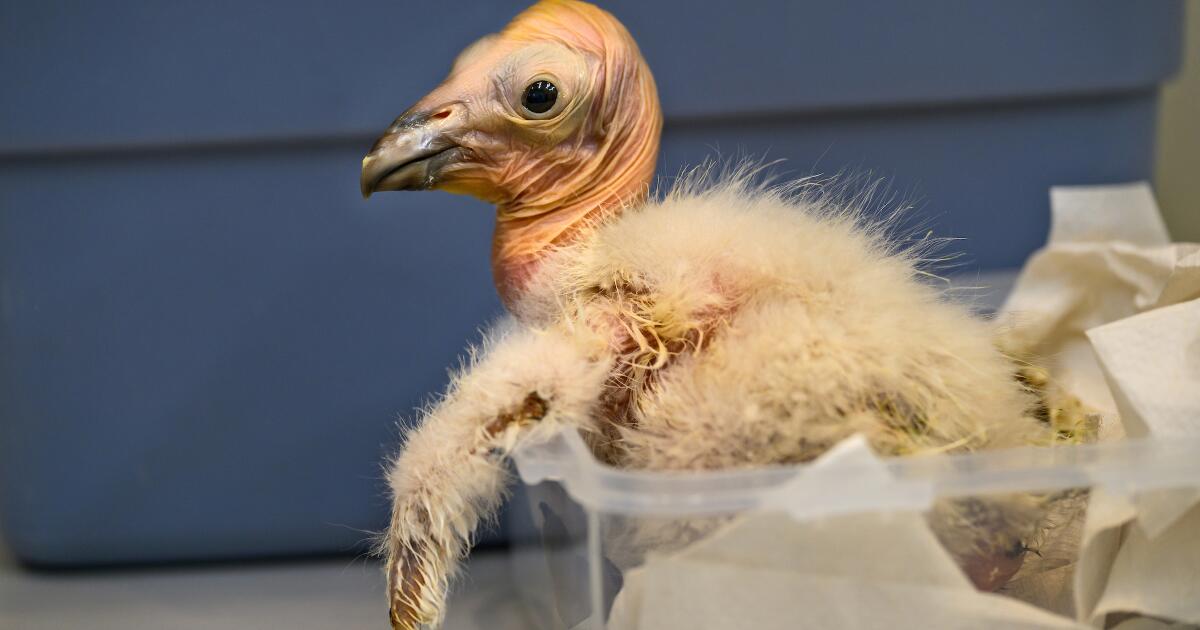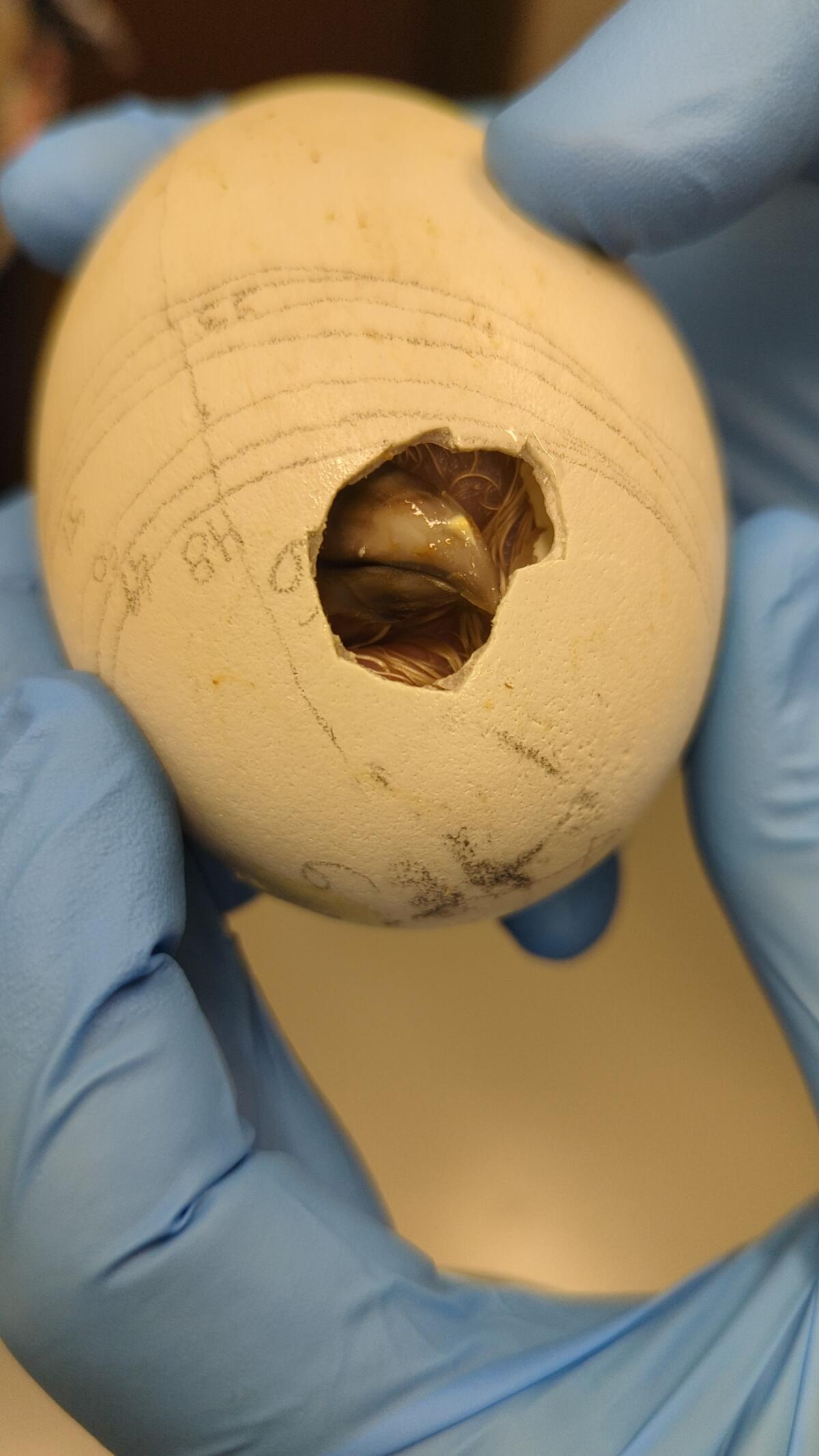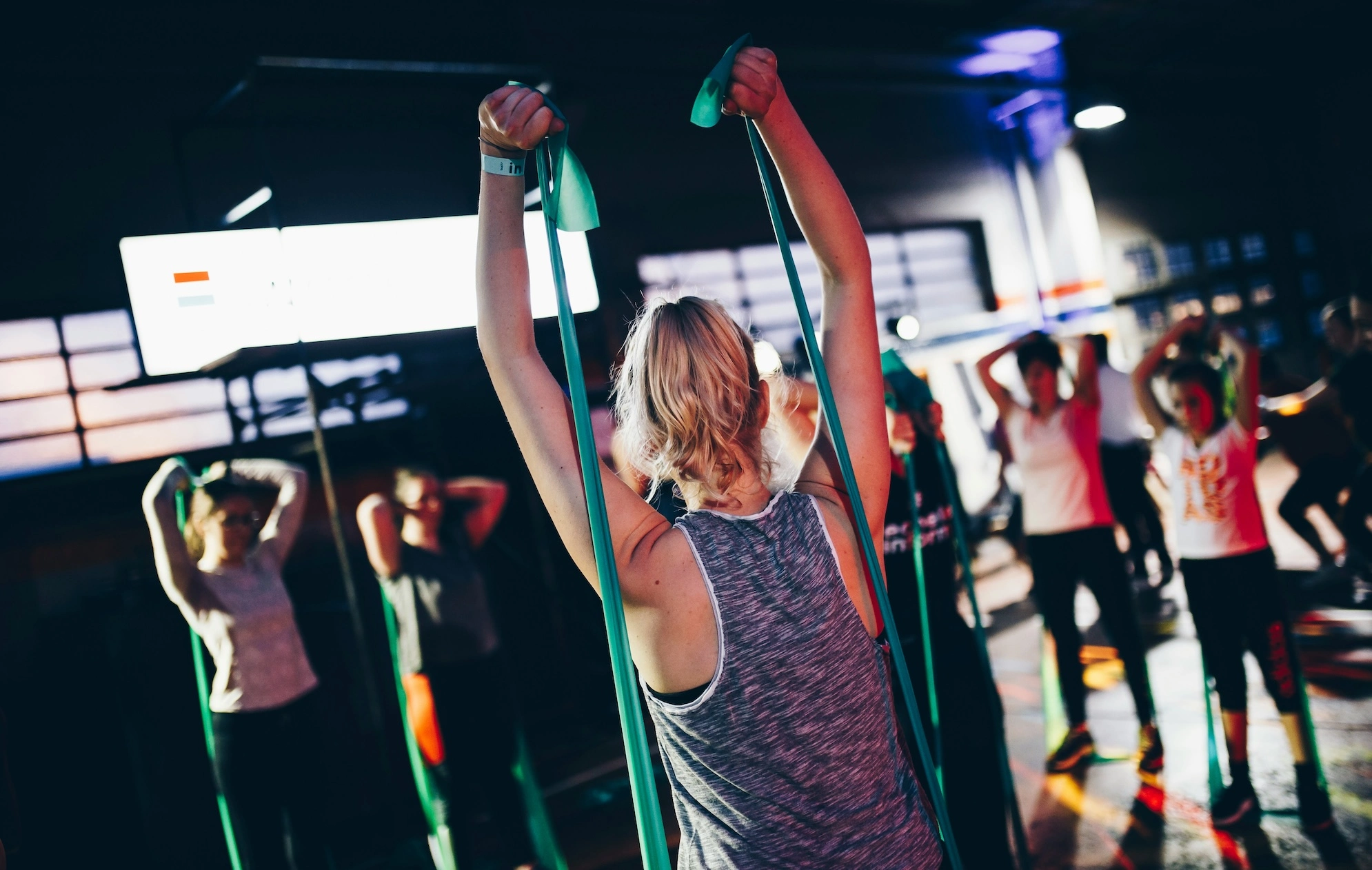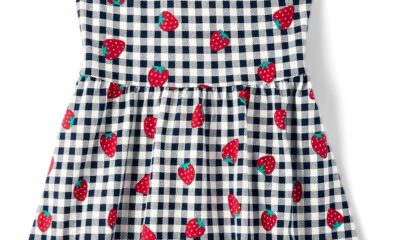Science
Microplastics discovered in human and dog testes

Researchers have located one more anatomical organ where microplastics — of all shapes and constituents — are found: human testes.
And although they can’t say for sure, they suspect the presence of these jagged bits and strands of polymers such as polyethylene, polyvinyl chloride and polystyrene could be — in part — behind a global trend in diminishing sperm quality and quantity.
Aggressive and impactful reporting on climate change, the environment, health and science.
In 2022, a team of researchers published a paper showing that global sperm counts fell about 1.2% per year between 1973 and 2018. From the year 2000, that rate accelerated to more than 2.6% per year.
“What I think will grab people’s attention with this study is the fact that plastic is in the testicles and potentially contributing to disarray in the function of the testicles,” said Leonardo Trasande, a pediatrician and public policy expert at New York University’s Grossman School of Medicine and Wagner School of Public Service.
“What should have gotten people excited all along is the fact that we’ve known that the invisible chemicals — the phthalates, the bisphenols and the PFAS that are used in plastic materials — are already known to be problems,” he said. “And so if this is what it takes to get people’s attention, I’m a bit sad. Because we already had enough evidence that plastics were bad for testicular function.”
Others, including Philip Landrigan, director of the Program for Global Public Health and the Common Good at Boston College, said the study was “consistent with a whole series of papers that have come out now in the last few years” showing these particles in a variety of organs, including the heart, liver, lungs and brain.
“It’s no surprise that microplastics are in the testes. The plastic is ubiquitous in today’s world, the stuff breaks down, and the smaller the particle, the more easily it can move into and throughout the human body,” he said.
Xiaozhong Yu, a professor of environmental health at the University of New Mexico — and an author on this latest research — said he’d been researching the effects of different chemicals on sperm production for years, and it was only recently that a colleague suggested he look for microplastics in testes.
“I said, ‘Are you joking?’,” he said, recalling the conversation, explaining he was pretty certain he wouldn’t find microplastics in tests because — like the brain — these sperm-generating factories are insulated by a protective barrier.
Nevertheless, they gave it a go.
They started by trying it out in dog testes. They were able to acquire 47 from neutering clinics. (The pet owners all provided permission.)
They found microplastics in small dogs, big dogs, young dogs and old dogs. The plastic bits were in every dog testis they examined. The number ranged from 2.36 micrograms per gram to 485.77 micrograms per gram. The average was 122.63 micrograms per gram, and 12 polymers were identified. The most abundant were polyethylene — the material found in plastic packaging, films and bottles — and polyvinyl chloride — a material found in most household water pipes.
He said he immediately went back to investigate their quality control. Maybe the testes had become contaminated at some point during the procedure or testing?
He and his team were able to rule that out, although Landrigan noted that contamination was still possible — unless everything, from procurement to analysis had been done in a “clean” room devoid of all plastic.
Yu and his team then decided to look at human samples. In the end, they were able to examine 23 testes from men ages 16 to 88. The tissue was acquired from males who had died in accidents and whose testes had been preserved post-autopsy. He said all samples were from men who had died in 2016 — made available following a seven-year storage requirement, after which time such samples are usually discarded.
Once again, they found microplastics in every sample they examined, and as with the dog testes, there was wide variation — from 161.22 micrograms per gram to 695.94 micrograms per gram, with an average of 328.44 micrograms per gram — nearly three times greater than what they found in dogs.
The microplastics in human testes were also composed of a variety of polymers, with polyethylene being the most common, followed by ABS (acrylonitrile, butadiene and styrene monomers — which is used to make a variety of products, including toys, automotive parts, medical equipment and consumer electronics), N66 (a kind of nylon), polyvinyl chloride and others.
The researchers also noted a correlation between the concentrations of PVC and polyethylene and testes weight: The higher the concentration, the lower the weight.
“Generally, a decreased testis weight is indicative of reduced spermatogenesis,” wrote the authors in the paper.
Yu said the difference in humans and dogs between polymer types — with dogs showing higher concentrations of PVC than men — likely has to do with lifestyle differences. He said consumer trends show a general aversion to eating or drinking out of bottles and foodware made from PVC, which contains bisphenol A — an additive that has been associated with health and developmental harm.
However, he began looking at dog toys, and noticed many of them are made from this kind of plastic.
“People are choosing to avoid it,” he said. But the market hasn’t budged in the same way for dogs.
Asked what the major route of exposure was for dogs and people, he said “microplastics are everywhere — in the air, in the drinking water, in the food, in our clothes. We don’t exactly know what is the most probable route. But they are everywhere.”
He also noticed variation within the groups. Dog testes acquired from public veterinary clinics showed higher levels of microplastics than those from private clinics, “potentially reflecting the influence of socioeconomic differences on the living environments and lifestyles of dogs.”
The researchers were also not able to find a correlation between age and microplastic concentration — a finding that surprised them. (Although men over the age of 55 had the least amount).
“The absence of a distinct age-dependent accumulation of microplastics in human testes may be due to unique physiological and biological processes of spermatogenesis,” they wrote, noting the continual renewal and release of sperm, which could “help mitigate the buildup of microplastics over time.”
That hypothesis, they noted, was supported by the presence of microplastics in human seminal fluid.
“The reality is that the petrochemical industry has gotten a pass all these years,” said Trasande, the NYU professor. “We know that plastics come from the petrochemical industry … and it’s no secret that we have paid as a society by letting the petrochemical industry pollute us. Now we’re paying the consequences. And if we don’t reverse course fairly quickly, we will have an even bigger problems before us because plastic consumption is growing, not slowing down.”
Landrigan agreed and noted that nations were currently in negotiations to sign a treaty that would curb the use of plastic and cap production.
“Plastic production is increasing exponentially,” he said noting that it’s increased more than 200-fold since the 1950s. He said plastic production is on a trajectory to double by 2040 and triple by 2060. There have been a total of about 8 billion tons of plastic produced since 1950, he said, and about 6 billion tons is “floating around us, most of it in the form of microplastics.”
He said the anatomical location of this latest microplastic discovery may hit close to home for lawmakers, who until this time, have not been too concerned.
He said he’d had to testify in the Senate several years ago about endocrine disruptors, and mentioned that sperm quantity was reduced in men who’d been exposed.
“Two senators sat back and unconsciously crossed their legs,” he said. “The body language was amazing.”


Science
Q&A: Learn how Olympians keep their cool from Team USA's chief sports psychologist

Your morning jog or weekly basketball game may not take place on an Olympic stage, but you can use Team USA’s techniques to get the most out of your exercise routine.
It’s not all about strength and speed. Mental fitness can be just as important as physical fitness.
That’s why the U.S. Olympic & Paralympic Committee created a psychological services squad to support the mental health and mental performance of athletes representing the Stars and Stripes.
“I think happy, healthy athletes are going to perform at their best, so that’s what we’re striving for,” said Jessica Bartley, senior director of the 15-member unit.
Bartley studied sports psychology and mental health after an injury ended her soccer career. She joined the USOPC in 2020 and is now in Paris with Team USA’s 592 competitors, who range in age from 16 to 59.
Bartley spoke with The Times about how her crew keeps Olympic athletes in top psychological shape, and what the rest of us can learn from them. Her comments have been edited for length and clarity.
Why is exercise good for mental health?
It gets you moving. It gets the endorphins going. And there’s often a lot of social aspects that are really helpful.
There are a number of sports that stretch your brain in ways that can be really, really valuable. You’re thinking about hand-eye coordination, or you’re thinking about strategy. It can improve memory, concentration, even critical thinking.
What’s the best way to get in the zone when it’s time to compete?
When I work with athletes, I like to understand what their zone is. If a 0 or a 1 is you’re totally chilled out and a 10 is you’re jumping around, where do you need to be? What’s your number?
People will say, “I’m at a 10 and I need to be at an 8 or a 7.” So we’ll talk about ways of bringing it down, whether it’s taking a deep breath, listening to relaxing music, or talking to your coach. Or there’s times when people say they need to be more amped up. That’s when you see somebody hitting their chest, or jumping up and down.
If you make a mistake in the middle of a competition, how do you move on instead of dwelling on it?
I often teach athletes a reset routine. I played goalie, so I had a lot of time to think after getting scored on. I would undo my goalie gloves and put them back on, which to me was a reset. I would also wear an extra hairband on my wrist, and when I would snap it, that meant I needed to get out of my head.
It’s not just a physical reset — it helps with a mental reset. If you do the same thing every single time, it goes through the same neural pathway to where it’s going to reset the brain. That can be really impactful.
Do Olympic athletes have to deal with burnout?
Oh, yeah. Everybody has a day where they don’t want to do whatever it is. That’s when you have to ask, “What’s in my best interests? Do I need a recovery day, or do I really need to get in the pool, or get in the gym?”
Sometimes you really do need what we like to refer to as a mental health day.
How can you psych yourself up for a workout when you just aren’t feeling it?
It’s really helpful to think about why you’re doing this and why you’re pushing yourself. Do you have goals related to an activity or sport? Is there something tied to values around hard work or discipline, loyalty or dependability?
When you don’t want to get in the gym, when you don’t want to go for a run, think about something bigger. Tie it back to values.
Is sleep important for maintaining mental health?
Yes! We started doing mental health screens with athletes before the Tokyo Games. We asked about depression, anxiety, disordered eating and body image, drugs and alcohol, and sleep. Sleep was actually our No. 1 issue. It’s been a huge initiative for us.
How much sleep should we be getting?
It’s different for everyone, but generally we know seven to nine hours of sleep is good. Sometimes some of these athletes need 10 hours.
I highly recommend as much sleep as you need. If you didn’t get enough sleep, napping can be really valuable.
Is napping just for Olympic athletes or is it good for everybody?
Everybody! Naps are amazing.
What if there’s no time for a nap?
There are different ways of recharging. Naps could be one of them, but maybe you just need to get off your feet for 20 minutes. Maybe you need to do a meditation or mindfulness exercise and just close your eyes for five minutes.
How do you minimize the effects of jet lag?
We try to shift one hour per day. That’s the standard way of doing it. If you can, it’s super helpful. But it’s not always possible.
The thing we tell athletes is that our bodies are incredible, and you will even things out if you can get back on schedule. One or two nights of crummy sleep is not going to impact your overall performance.
What advice do you give athletes who have trouble falling asleep the night before a competition?
You don’t want to change much right before a competition, so I usually direct athletes to do what they would normally do.
Do you need to unwind by reading a book? Do you need to talk on the phone with somebody and get your mind off things? Can you put your mind in a really restful place and think about things that are really relaxing?
Are there any mindfulness or meditation exercises that you find helpful?
There are some athletes who benefit greatly from an hourlong meditation. I love something quick, something to reset my brain, maybe close my eyes for a minute.
If I’m feeling like I need to take a moment, I love mindful eating. You savor a bite and go, “Oh, my gosh, I have not been fully engaged with my senses today.” Or you could take a mindful walk and take in the sights, the smells, all of the things that are around you.
What do you eat when you need a quick nutrition boost?
Cashews. I tend to carry those with me. They’ve got enough energy to make sure I keep going, physically.
I’ve always got gummy bears on me too. There’s no nutritional value but they keep me going mentally. I’m a big proponent of both.
Is it OK to be superstitious in sports?
It depends how flexible you are. Maybe you put on your socks or shoes a certain way, or listen to certain music. Routines are really soothing. They set your brain up for success in a particular performance. It can be really, really helpful.
But I’ve also seen an athlete forget their lucky underwear or their lucky socks, and they’re all out of sorts. So your routine has to be flexible enough that you’re not going to completely fall apart if you don’t do it exactly.
Are Olympians made of stronger psychological stuff than the rest of us?
Not necessarily. There are some who don’t get feathers ruffled and have a high tolerance for the fanfare. There’s also a lot of regular human beings who just happen to be fantastic at a particular activity.
Science
‘Ready, Steady, Slow’: Championship Snail Racing at 0.006 M.P.H.

Earlier this month, the rural village of Congham, England, played host to a less likely group of athletes: dozens of garden snails. They had gathered to compete in the World Snail Racing Championships, where the world record time for completing the 13.5 inch course stands at 2 minutes flat. At that speed — roughly 0.006 miles per hour — it would take the snails more than six days to travel a mile.
Science
Caring for condor triplets! Record 17 chicks thrive at L.A. Zoo under surrogacy method

A new method of rearing California condors at the Los Angeles Zoo has resulted in a record-breaking 17 chicks hatched this year, the zoo announced Wednesday.
All of the newborn birds will eventually be considered for release into the wild under the U.S. Fish and Wildlife Service’s California Condor Recovery Program, a zoo spokesperson said.
“What we are seeing now are the benefits of new breeding and rearing techniques developed and implemented by our team,” zoo bird curator Rose Legato said in a statement. “The result is more condor chicks in the program and ultimately more condors in the wild.”
Breeding pairs of California condors live at the zoo in structures the staff “affectionately calls condor-miniums,” spokesperson Carl Myers said. When a female produces a fertilized egg, the egg is moved to an incubator. As its hatching approaches, the egg is placed with a surrogate parent capable of rearing the chick.
California condor eggs are cared for at L.A. Zoo. The animal is critically endangered.
(Jamie Pham / L.A. Zoo)
This bumper year of condor babies is the result of a modification to a rearing technique pioneered at the L.A. Zoo.
Previously, when the zoo found itself with more fertilized eggs than surrogate adults available, staff raised the young birds by hand. But condors raised by human caretakers have a lower chance of survival in the wild (hence the condor puppets that zookeepers used in the 1980s to prevent young birds from imprinting on human caregivers).
In 2017, the L.A. Zoo experimented with giving an adult bird named Anyapa two eggs instead of one. The gamble was a success. Both birds were successfully released into the wild.
Faced with a large number of eggs this year, “the keepers thought, ‘Let’s try three,’” Myers said. “And it worked.”
The zoo’s condor mentors this season ultimately were able to rear three single chicks, eight chicks in double broods and six chicks in triple broods. The previous record number of 15 chicks was set in 1997.
Condor experts applauded the new strategy.
“Condors are social animals and we are learning more every year about their social dynamics. So I’m not surprised that these chick-rearing techniques are paying off,” said Jonathan C. Hall, a wildlife ecologist at Eastern Michigan University. “I would expect chicks raised this way to do well in the wild.”
The largest land bird in North America with an impressive wingspan up to 9½ feet, the California condor could once be found across the continent. Its numbers began to decline in the 19th century as human settlers with modern weapons moved into the birds’ territory. The scavenger species was both hunted by humans and inadvertently poisoned by lead bullet fragments embedded in carcasses it ate. The federal government listed the birds as an endangered species in 1967.

A condor, one of a record-breaking 17 at the zoo, makes its way out of its shell.
(Jamie Pham / L.A. Zoo)
When the California Condor Recovery Program began four decades ago, there were only 22 California condors left on Earth. As of December, there were 561 living individuals, with 344 of those in the wild. Despite the program’s success in raising the population’s numbers, the species remains critically endangered.
In addition to the ongoing threat of lead poisoning, the large birds are also at risk from other toxins. One 2022 study found more than 40 DDT-related compounds in the blood of wild California condors — chemicals that had made their way from contaminated marine life to the top of the food chain.
“Despite our success in returning condors to the wild, free-flying condors continue to face many obstacles with lead poisoning being the No. 1 cause of mortality,” said Joanna Gilkeson, spokesperson for Fish and Wildlife’s Pacific Southwest Region. “Innovative strategies, like those the L.A. Zoo is implementing, help us to produce more healthy chicks and continue releasing condors into the wild.”
The chicks will remain in the zoo’s care for the next year and a half before they are evaluated for potential release to the wild. Thus far, the zoo has contributed 250 condor chicks to Fish and Wildlife’s program, some of which the agency has redeployed to other zoos as part of its conservation efforts.
In a paper published earlier this year, a team of researchers found that birds born in captivity have slightly lower survival rates for their first year or two but then have equally successful outcomes to wild-hatched birds.
“Because condors reproduce slowly, releases of captive-bred birds are essential to the recovery of the species, especially in light of ongoing losses due to lead-related mortality,” said Victoria Bakker, a quantitative ecologist at Montana State University and lead author of the paper. “The team at the L.A. Zoo should be recognized for their innovative and important contributions to condor recovery.”
-

 World1 week ago
World1 week agoOne dead after car crashes into restaurant in Paris
-

 Midwest1 week ago
Midwest1 week agoMichigan rep posts video response to Stephen Colbert's joke about his RNC speech: 'Touché'
-

 News1 week ago
News1 week agoVideo: Young Republicans on Why Their Party Isn’t Reaching Gen Z (And What They Can Do About It)
-

 News1 week ago
News1 week agoIn Milwaukee, Black Voters Struggle to Find a Home With Either Party
-

 Politics1 week ago
Politics1 week agoFox News Politics: The Call is Coming from Inside the House
-

 News1 week ago
News1 week agoVideo: J.D. Vance Accepts Vice-Presidential Nomination
-

 Movie Reviews1 week ago
Movie Reviews1 week agoMovie Review: A new generation drives into the storm in rousing ‘Twisters’
-

 World1 week ago
World1 week agoTrump to take RNC stage for first speech since assassination attempt
















